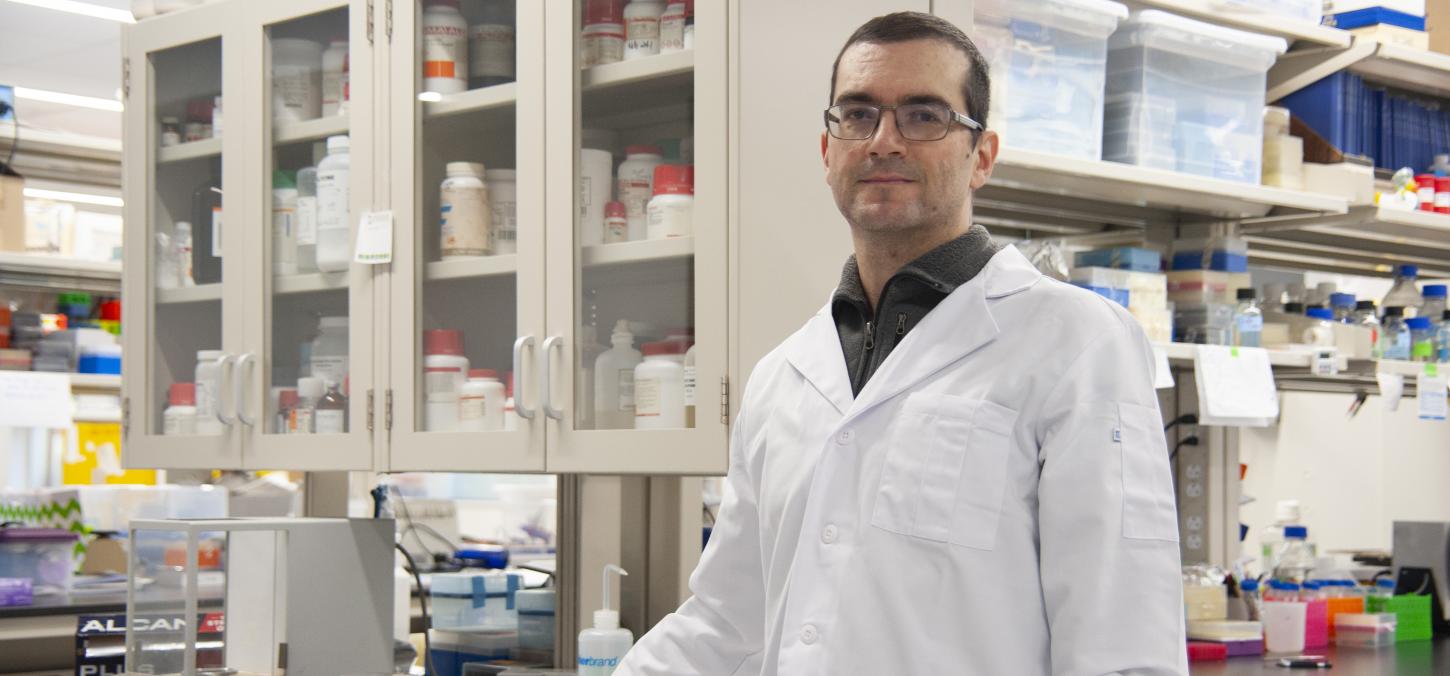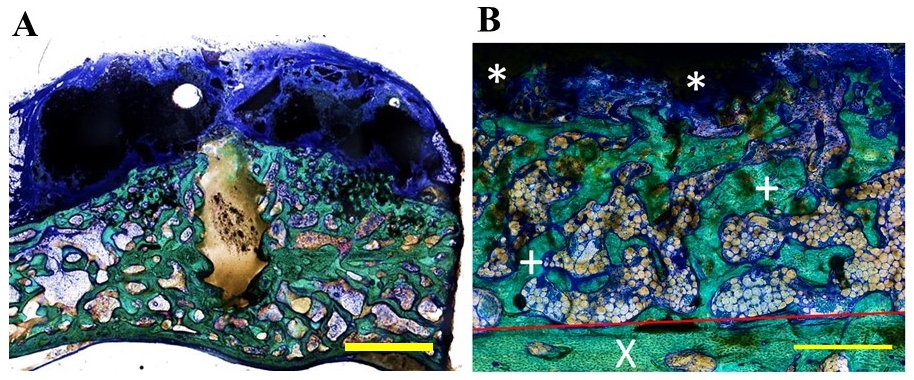
Recipe for success: U of T Dentistry researchers cook up a promising new conjugate drug-and-graft system for jaw bone regeneration
A dual approach to regenerating bone, involving an osteoporosis drug conjugate and a novel, biodegradable graft system, is offering hope for improved dental implant success.
While being able to restore missing teeth through permanent dental implants is increasingly popular, one of the major challenges, explains U of T Dentistry professor Michael Glogauer, is whether enough bone is present in the jaw to successfully plant the screws. Without the proper bone density, implants fail.
“As soon as a tooth is extracted, there’s no reason for the bone to be there, so that bone is lost,” Glogauer explains. In fact, most patients desiring implant dentistry will require bone grafting ahead of successful implant surgery.
How to coax the body to build back lost bone, leading to better long-term outcomes for dental implants, has become a major line of inquiry for dental research. But thus far, there’s been little success.
To overcome this challenge, Glogauer, along with postdoctoral fellow Zeeshan Sheikh and professor Marc Grynpas (Dept. of Laboratory Medicine & Pathology, Institute of Biomaterials & Biomedical Engineering), teamed up with British Columbia biotech company, Mesentec. The company has developed a bisphosphonate “drug conjugate” which harnesses several drugs into a single drug, and is used to prevent osteoporosis, bone cancer, and even breast cancer metastasis.
The researchers use the drug conjugate for its targeting capabilities: used as a carrier, the drug, known as C3, zeroes in on osteoblasts. “It goes right where it needs to be,” says Glogauer. The researchers combine the carrier drug with a mixture of resorbable calcium phosphates, brushite and monetite, which acts as a graft to stimulate bone growth in the exact area it’s needed. Bone grows “into graft and upwards,” says Sheikh, shortening implant placement times and improving overall outcomes.

Made from calcium phosphates, the bone graft is also bioabsorbable, so once it has done its job of stimulating bone growth where it’s needed, it breaks down in the body and safely dissolves.
“We want to shorten healing time and improve implant placement and stabilization,” says Sheikh, who has won numerous awards for this research, including first prize at the American Association of Implant Dentistry Congress for the poster competition in 2017.
The U of T research team hope to get clinical trials underway in the next year. The pre-clinical research was published in the International Journal of Oral and Maxillofacial Implants in February of this year.